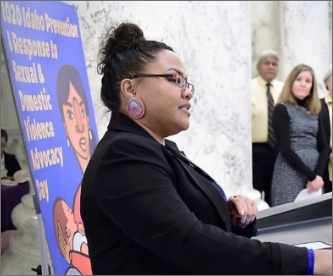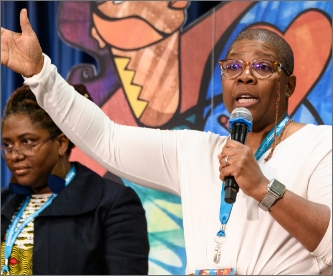What We Do
Gender Violence + Systemic Oppression
Gender violence expands across multiple genders and multiple forms of violence. Gender violence allows for a more expansive conversation about the root causes of violence.
Gender violence encompasses interpersonal, structural, and state violence that disproportionately harms women, girls, femmes, and gender-oppressed peoples.
Gender violence is interconnected to and sustained by systemic oppression. More broadly, gender violence is a direct result of unequal social, political, racial, and gendered power.

Communities most impacted by violence + community centered solutions
Gender violence impacts every community and has a much higher impact on communities that are most affected by oppression—Black, Indigenous, Latinx, and people of color, trans and queer community, individuals with disabilities, immigrants, refugees, and more. Centering solutions on communities most impacted while supporting and uplifting community-centered solutions to ending violence will better meet the needs of all communities.

Transformation of our response to violence: safety, healing, and resilience
As we work to end all forms of gender violence, we know we must continue to heal from the past and present impacts of violence, while investing in community-centered responses. Our tribal and community domestic and sexual violence organizations continue to be vital partners in all of the work at the Idaho Coalition as we strive to bring forward the resilience of our communities through healing practices.

Transformative cultural shift toward collective thriving
Culture plays a vital role in understanding what it means to be human. It has taught us the power of seeing ourselves as deeply interconnected human beings. Culture can transform hearts and minds. Our transformative cultural strategies and campaigns reflect the worldview that we want to live into now.

Mobilizing Across Movement
All forms of violence are interconnected, and so are the solutions. We join with our community partners to mobilize movements for gender justice, racial justice, immigrant justice, Trans and Queer justice, disability justice, climate justice and more. Relationships across movements, based in mutuality and trust, allow for the Idaho Coalition to amplify the voice and experiences of communities most impacted by violence.
What Service Providers Need To Know
The Idaho Coalition collaborates with our essential partners, Idaho’s community and tribal domestic and sexual violence programs, and other non-governmental and governmental service providers to prevent and respond to gender violence in all its forms, including the four types of violence above.



